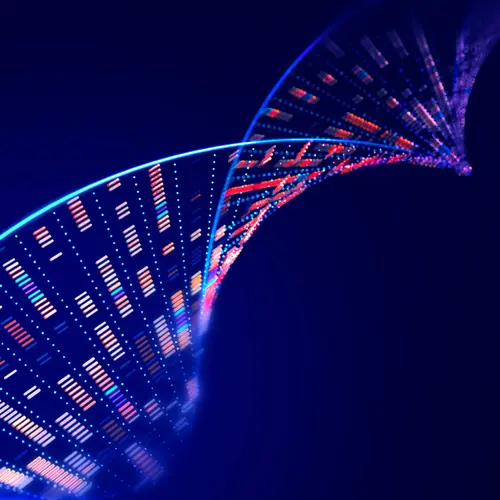Ulcerative colitis (UC) is a long-term condition that affects your large intestine, but it can also have an impact on other parts of your body, including your skin.
Your skin problems might show up before or after you get a diagnosis of ulcerative colitis. They'll likely get worse when you're having a flare and go away when you get your UC under control.
Some skin issues are linked to the same inflammation and immune problems that trigger your flares. Others are due to lack of nutrition or side effects from medicine.
See your doctor if you notice any rashes. Your treatment will depend on the type of skin problem you have.
Erythema Nodosum (EN)
When you have UC, you can get painful bumps in the fat under your skin. They'll be about 1 to 5 centimeters wide and may look and feel like bruises. These red or purple lumps usually show up on the front part of your shins and ankles. But it's possible to get them on your upper legs or arms. You might have a fever or eye and joint pain at the same time.
Some studies show about 1 in 10 people with UC might get erythema nodosum (EN). But some researchers think it happens less often.
EN is closely linked to UC flares. But you might be more likely to get it if you're:
- Female
- Between ages 20 and 40
- Have family members with EN
The best way to prevent EN is to manage your ulcerative colitis. But it might go away on its own in about 6 weeks and won't leave you with scars. Ask your doctor how to feel better while you heal. They may want you to:
- Keep your legs raised
- Put a cool compress on your sores
- Wear compression socks
Pain relievers may also help. Ask your doctor which ones are safe for you.
Pyoderma Gangrenosum (PG)
At first, this rare skin condition might look like pimples or bug bites. But pyoderma gangrenosum (PG) can spread fast and turn into large pus-filled ulcers with blue or purple edges. You might also get joint pain, fever, or feel like you have the flu.
Sores can show up anywhere on your body. But you're more likely to get them on your shins or near a spot where you had surgery.
PG is hard to predict. It might go away on its own or spread to the size of a whole limb.
You might be more likely to get PG if:
- Your UC is really serious
- You're female
- You have a family history of PG
Treatment for PG includes managing your UC with drugs or surgery. But you'll need medical care right away to avoid serious scars. Your doctor might give you:
- Wound care
- Medicine for your skin
- Steroid pill or shot
Mouth Sores
When your disease flares up, you can get a handful of mouth problems. These symptoms may show up even before you're diagnosed with UC. They can get worse if you have don't get enough nutrition.
You may get:
- Painful ulcers, like canker sores
- Swollen tongue, lips, or gums
- Dry or cracked lips
Rarely, you may get something called pyostomatitis vegetans (PV). These are white or yellow sores that form on the soft areas of your mouth and gums. That's pretty much everything but your teeth. They'll follow a cobblestone pattern. You might also get swollen lymph nodes, pain, and fever.
Your mouth sores will probably get better when you manage your flares. In the meantime, your doctor might give you:
- Numbing cream
- Steroid creams or pills
- Antiseptic mouthwash
Sweet's Syndrome
Rarely, you might get tender or painful bumps or patches on the backs of your hands. Or they may form on your arms, legs, torso, or face. You'll usually get a sudden fever first. You may also get joint pain, fatigue, headaches, muscle pain, eye problems, or a general feeling of not being well.
Sweet's syndrome may look like erythema nodosum. Your doctor should be able to tell the difference. They can give you a physical exam and run some tests on your skin.
Sweet's syndrome may last for weeks or months. It might go away on its own without leaving a scar. But to make it go away faster, your doctor might give you medicine such as:
- Steroids, like prednisone
- Immunosuppressants
- Colchicine or potassium iodide
You'll need to treat your UC to lower the chances that Sweet's syndrome will return.
Bowel-Associated Dermatosis-Arthritis Syndrome (BADAS)
This is a rare problem that might happen after bowel bypass surgery. You might get a fever and feel flu-like. Your joints may hurt. Symptoms of BADAS can look like Sweet's syndrome and pyoderma gangrenosum.
Treatment for BADAS includes:
- Steroids
- Immunosuppressants
- Antibiotics, if you have an infection
Other Skin Complications
Psoriasis. You can get raised red patches on your skin. Your doctor may give you a steroid cream or salicylic acid to make them go away. You may need to take a stronger medicine by mouth or as a shot.
Fissures. Hard or frequent bowel movements can tear the skin around your anus. Fissures usually go away on their own, but your doctor can give you a cream to ease the pain. Ask them how to prevent fissures in the future.
Skin tags. These are soft flaps of skin that usually don't hurt. They may or may not go away, but they're harmless.
Side effects from medicine. You may get a psoriasis or eczema-like reaction. If you take steroids, you can get acne, stretch marks, or a puffy face.
It's possible to have an allergic reaction to any drug. Tell your doctor right away if you get:
- Rash
- Problems breathing
- Swollen or itchy face, lips, throat, or tongue

